Abstract
Skinner's Verbal Behavior (1957) and “An operant analysis of problem solving” (1966) were used to develop a coding system to analyze the relationships between verbal behaviors in family problem solving discussions. Taking solution statements as a target behavior, sequential relationships were examined with both subsequent and antecedent verbal behaviors, comparing families with higher and lower rates of solution statements. Results indicated that two categories of verbal behavior occurred both subsequent and antecedent to solution statements more frequently in families with higher frequencies of solution statements: Agreements and contingency statements. Results are discussed in terms of an operant theory of problem solving in which agreements may serve as reinforcers for solutions and contingency statements may serve as discriminative stimuli.
Full text
PDF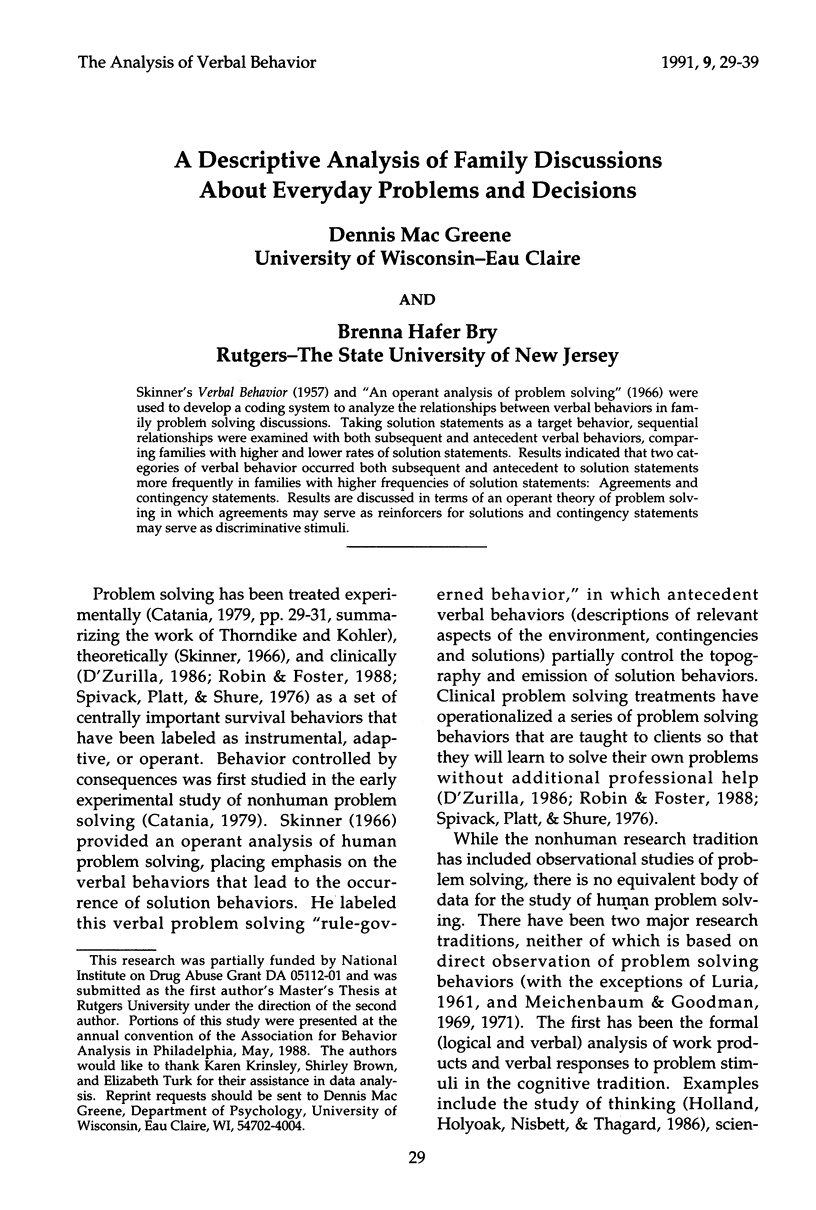
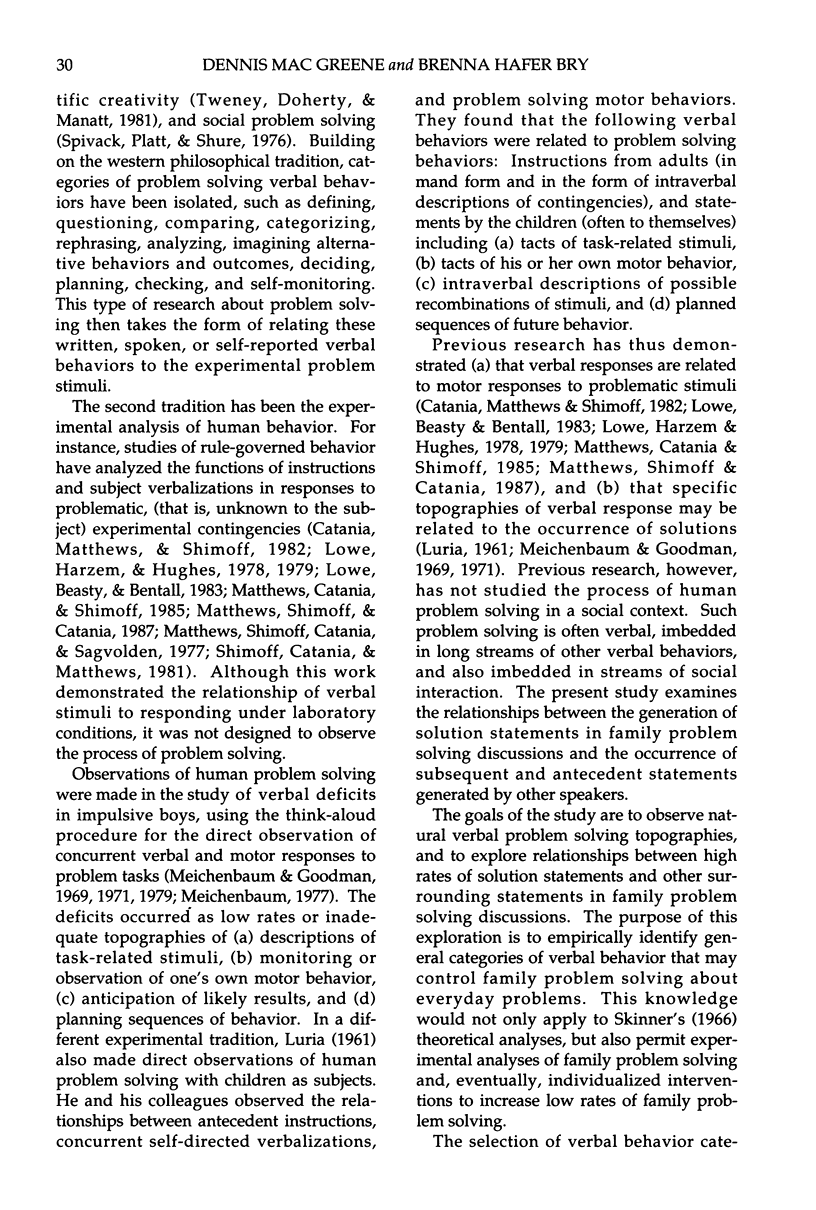
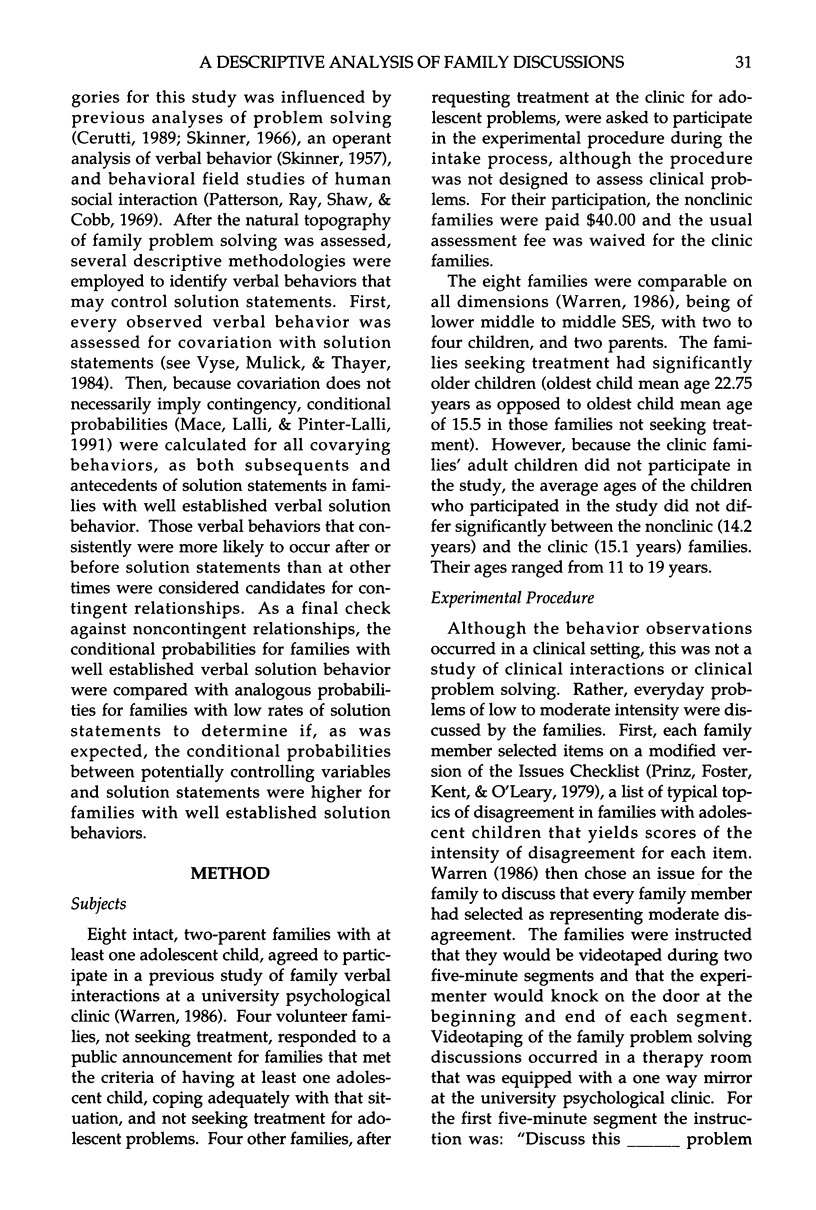
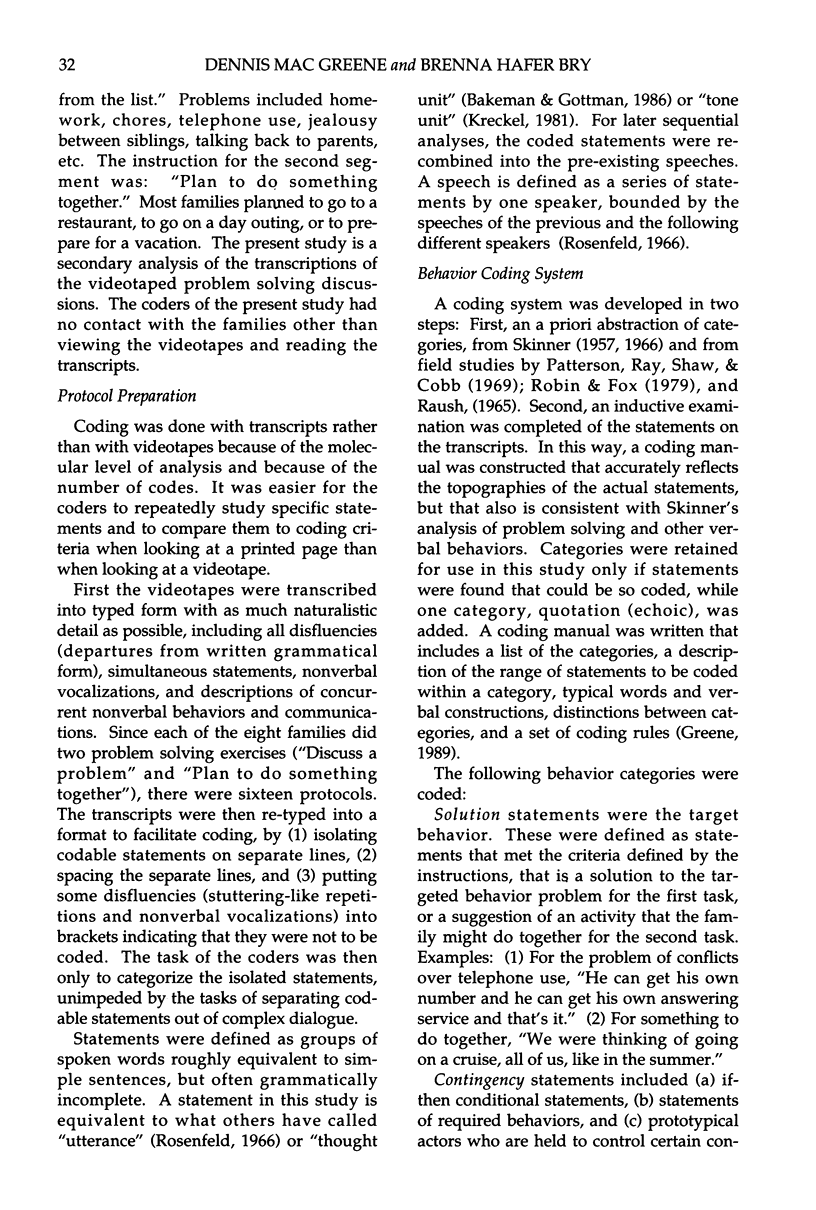
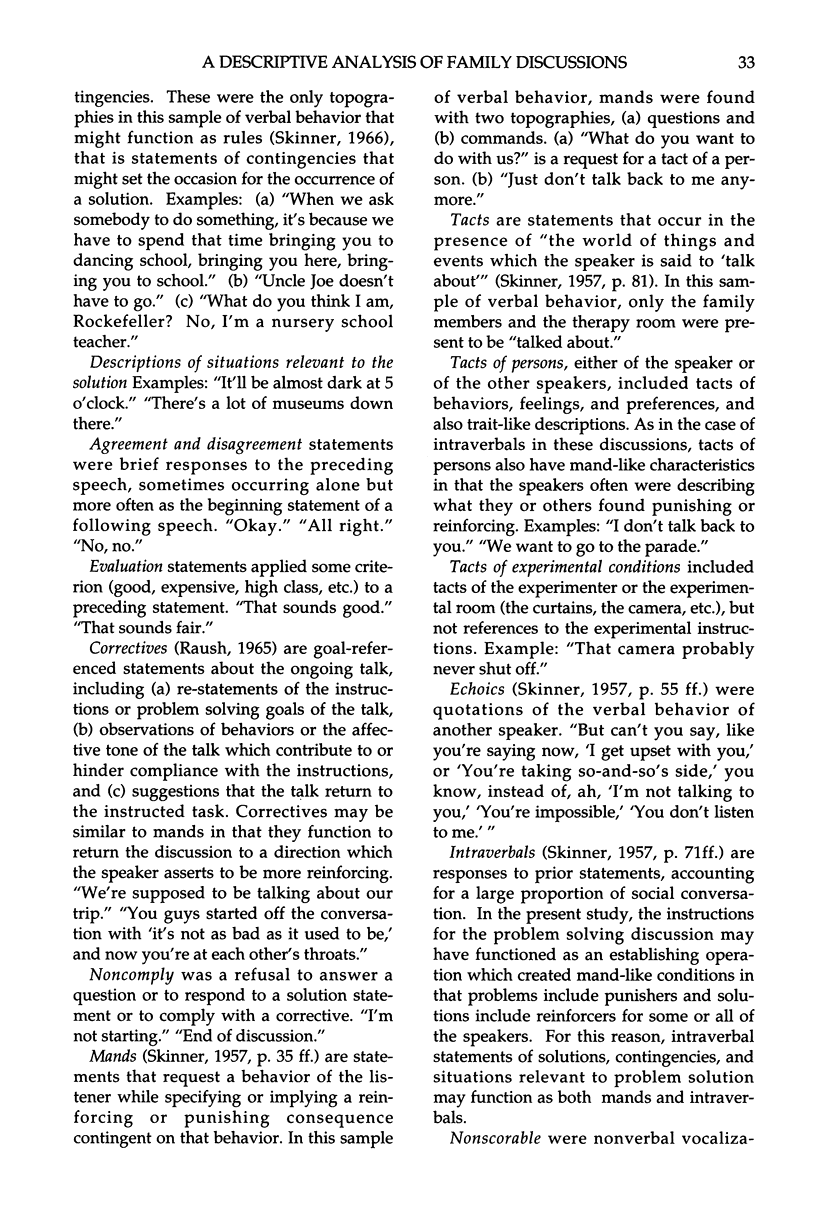
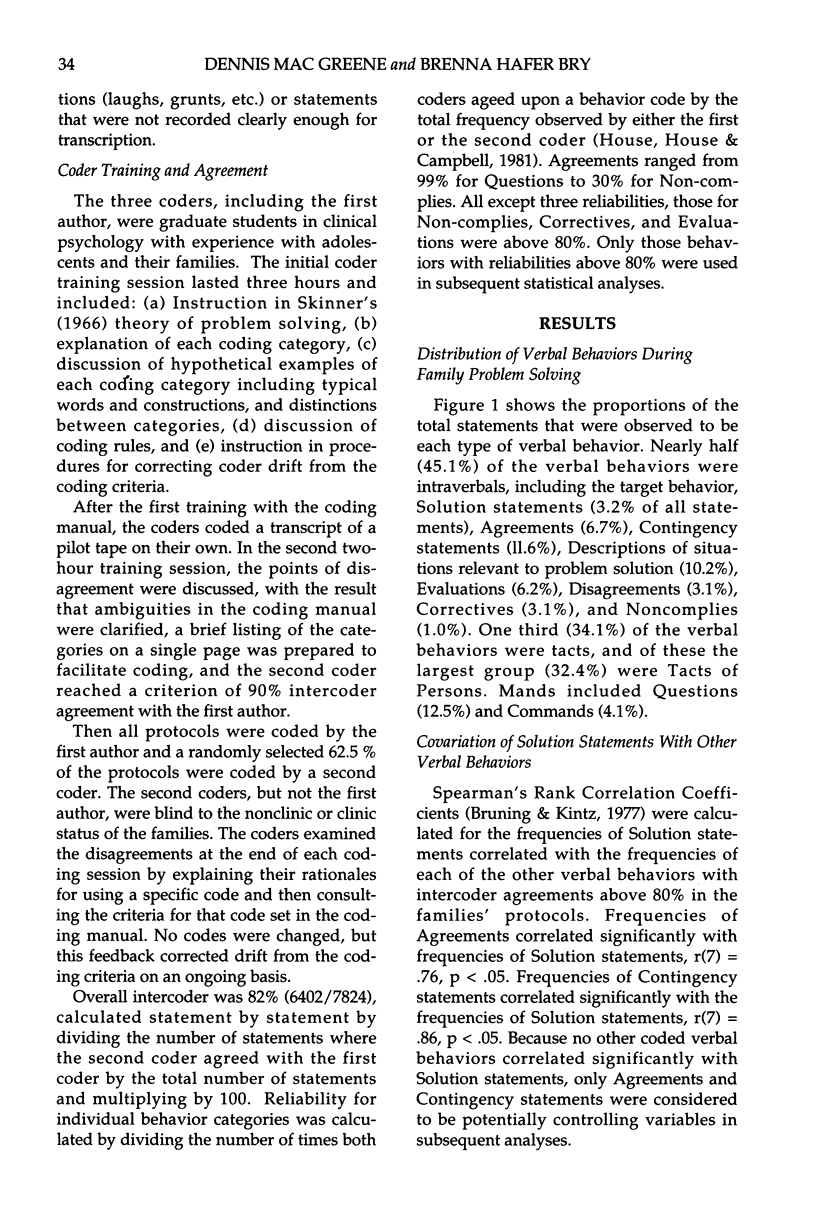


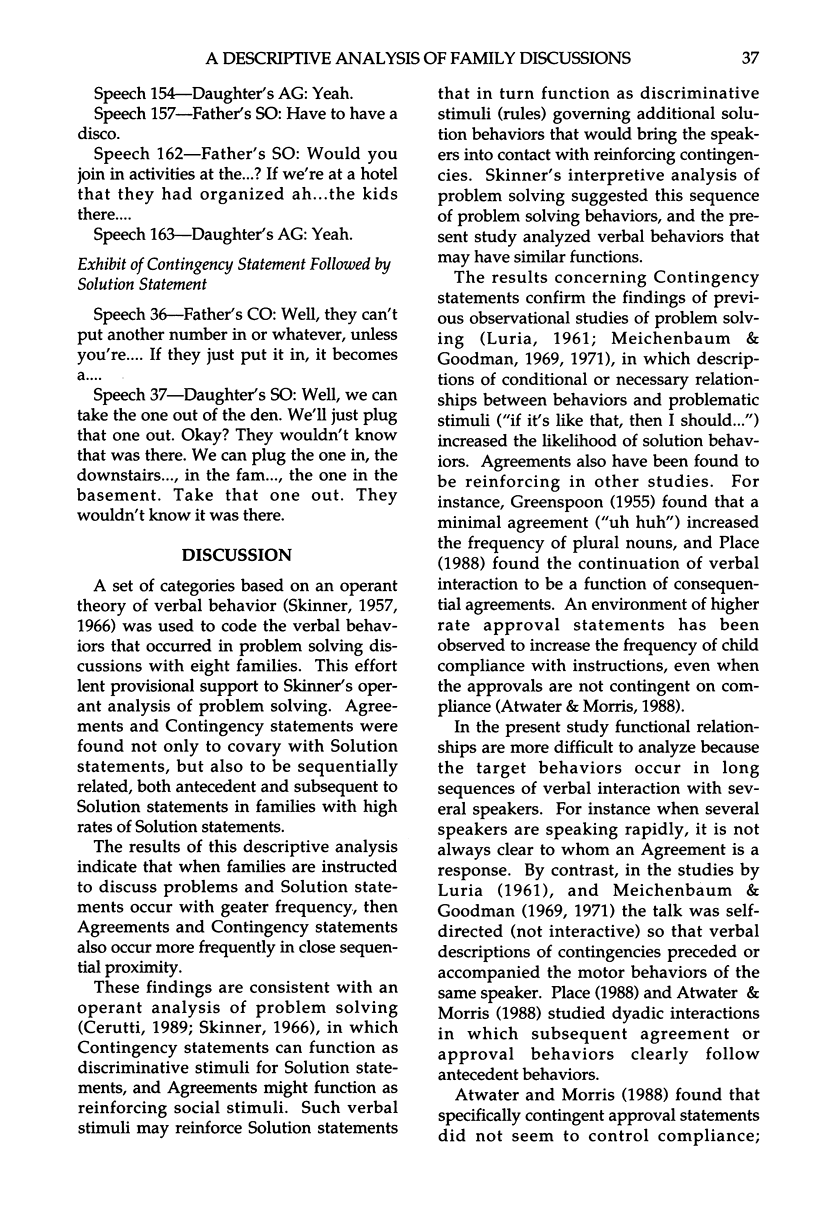
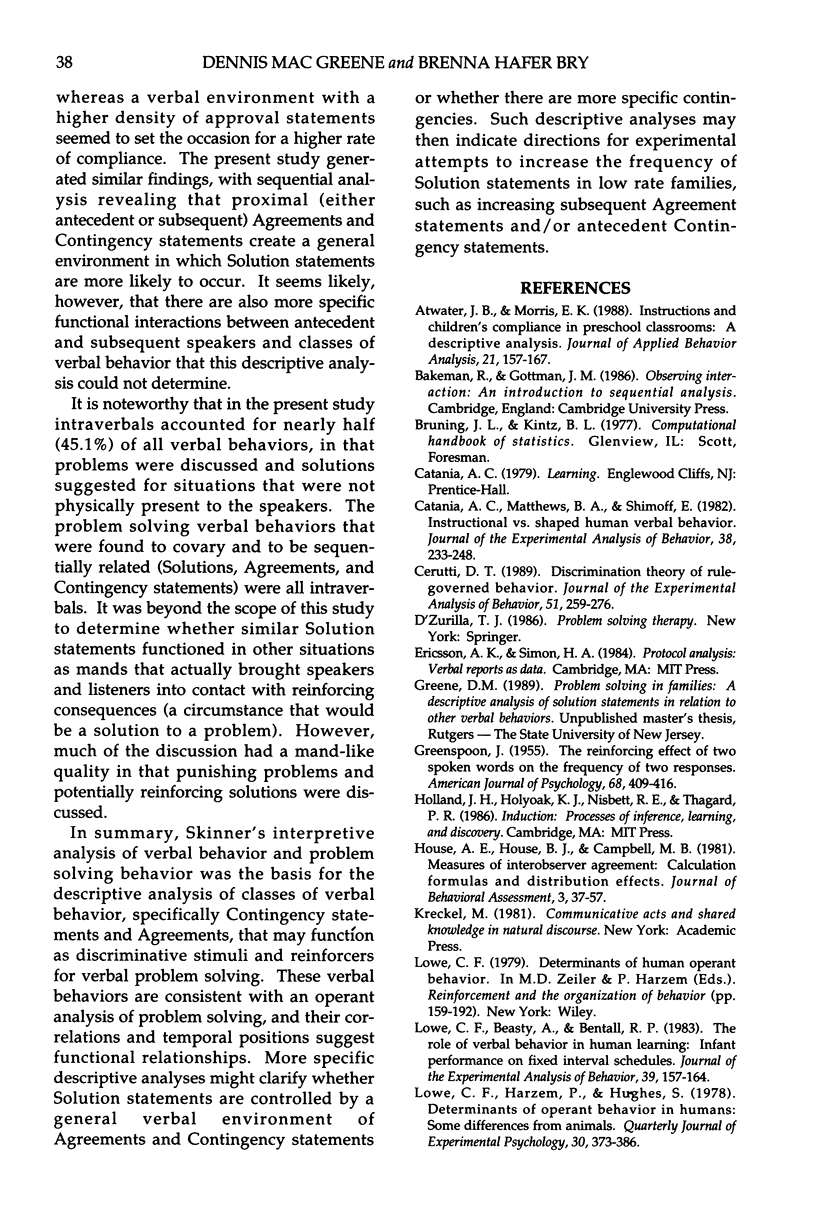
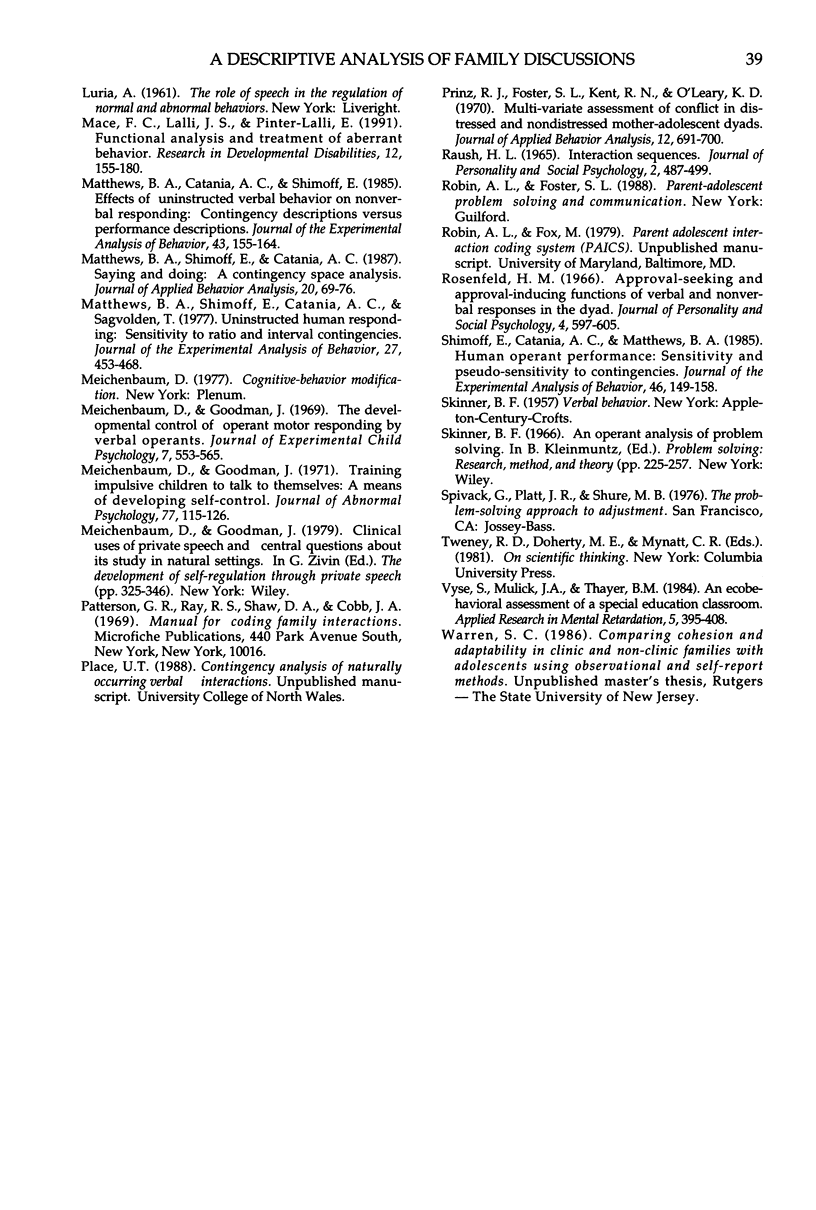
Selected References
These references are in PubMed. This may not be the complete list of references from this article.
- Atwater J. B., Morris E. K. Teachers' instructions and children's compliance in preschool classrooms: a descriptive analysis. J Appl Behav Anal. 1988 Summer;21(2):157–167. doi: 10.1901/jaba.1988.21-157. [DOI] [PMC free article] [PubMed] [Google Scholar]
- Catania A. C., Matthews B. A., Shimoff E. Instructed versus shaped human verbal behavior: Interactions with nonverbal responding. J Exp Anal Behav. 1982 Nov;38(3):233–248. doi: 10.1901/jeab.1982.38-233. [DOI] [PMC free article] [PubMed] [Google Scholar]
- Cerutti D. T. Discrimination theory of rule-governed behavior. J Exp Anal Behav. 1989 Mar;51(2):259–276. doi: 10.1901/jeab.1989.51-259. [DOI] [PMC free article] [PubMed] [Google Scholar]
- GREENSPOON J. The reinforcing effect of two spoken sounds on the frequency of two responses. Am J Psychol. 1955 Sep;68(3):409–416. [PubMed] [Google Scholar]
- Lowe C. F., Beasty A., Bentall R. P. The role of verbal behavior in human learning: infant performance on fixed-interval schedules. J Exp Anal Behav. 1983 Jan;39(1):157–164. doi: 10.1901/jeab.1983.39-157. [DOI] [PMC free article] [PubMed] [Google Scholar]
- Lowe C. F., Harzem P., Hughes S. Determinats of operant behavior in humans: some differences from animals. Q J Exp Psychol. 1978 May;30(2):373–386. doi: 10.1080/14640747808400684. [DOI] [PubMed] [Google Scholar]
- Mace F. C., Lalli J. S., Lalli E. P. Functional analysis and treatment of aberrant behavior. Res Dev Disabil. 1991;12(2):155–180. doi: 10.1016/0891-4222(91)90004-c. [DOI] [PubMed] [Google Scholar]
- Matthews B. A., Catania A. C., Shimoff E. Effects of uninstructed verbal behavior on nonverbal responding: Contingency descriptions versus performance descriptions. J Exp Anal Behav. 1985 Mar;43(2):155–164. doi: 10.1901/jeab.1985.43-155. [DOI] [PMC free article] [PubMed] [Google Scholar]
- Matthews B. A., Shimoff E., Catania A. C., Sagvolden T. Uninstructed human responding: sensitivity to ratio and interval contingencies. J Exp Anal Behav. 1977 May;27(3):453–467. doi: 10.1901/jeab.1977.27-453. [DOI] [PMC free article] [PubMed] [Google Scholar]
- Matthews B. A., Shimoff E., Catania A. C. Saying and doing: A contingency-space analysis. J Appl Behav Anal. 1987 Spring;20(1):69–74. doi: 10.1901/jaba.1987.20-69. [DOI] [PMC free article] [PubMed] [Google Scholar]
- Meichenbaum D. H., Goodman J. Training impulsive children to talk to themselves: a means of developing self-control. J Abnorm Psychol. 1971 Apr;77(2):115–126. doi: 10.1037/h0030773. [DOI] [PubMed] [Google Scholar]
- Meichenbaum D., Goodman J. The developmental control of operant motor responding by verbal operants. J Exp Child Psychol. 1969 Jun;7(3):553–565. doi: 10.1016/0022-0965(69)90016-2. [DOI] [PubMed] [Google Scholar]
- Prinz R. J., Foster S., Kent R. N., O'Leary K. D. Multivariate assessment of conflict in distressed and nondistressed mother-adolescent dyads. J Appl Behav Anal. 1979 Winter;12(4):691–700. doi: 10.1901/jaba.1979.12-691. [DOI] [PMC free article] [PubMed] [Google Scholar]
- Raush H. L. Interaction sequences. J Pers Soc Psychol. 1965 Oct;2(4):487–499. doi: 10.1037/h0022478. [DOI] [PubMed] [Google Scholar]
- Shimoff E., Matthews B. A., Catania A. C. Human operant performance: Sensitivity and pseudosensitivity to contingencies. J Exp Anal Behav. 1986 Sep;46(2):149–157. doi: 10.1901/jeab.1986.46-149. [DOI] [PMC free article] [PubMed] [Google Scholar]
- Vyse S., Mulick J. A., Thayer B. M. An ecobehavioral assessment of a special education classroom. Appl Res Ment Retard. 1984;5(3):395–408. doi: 10.1016/s0270-3092(84)80060-0. [DOI] [PubMed] [Google Scholar]


